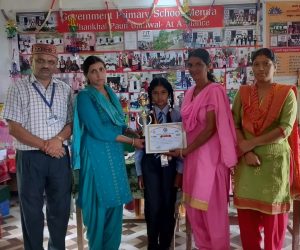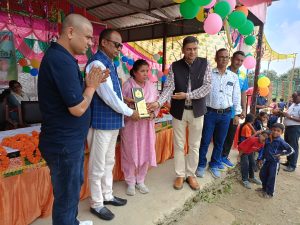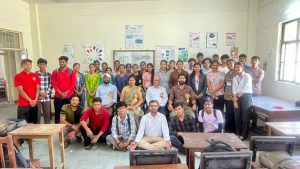The Hills of Uttarakhand: A Boon for Its People

Uttarakhand, known as the Devbhoomi or Land of the Gods, is an area enriched with
remarkable natural resources. Its varied terrain and climate provide advantages that only a small
portion of India can boast about. However, the complete potential of these resources remains
unexplored, leaving the state facing issues such as out-migration, unemployment, and land being
overused for tourism and hotel expansion.
Comprising 13 districts, Uttarakhand’s landscape is divided between the plains and hilly areas. Two
districts are situated in the Terai region, where the fertile alluvial soil of the Ganga basin facilitates
the growth of crops like sugarcane and cereals, most notably the renowned Dehradun Basmati rice.
In contrast, the other 93% of the state is made up of mountainous terrain, which can be categorized
into three separate zones: the Lower Sub-Himalayas (900–1,500 meters), the Lesser Himalayas
(1,500–3,000 meters), and the Greater Himalayas (above 3,000 meters).
These mountainous areas create a range of agroecological zones with varying climatic conditions and
vegetation, making them suitable for cultivating a diverse assortment of crops. In the Terai region,
the sub-tropical climate and nutrient-rich Mollisols make it ideal for the growth of fruits such as
mango, guava, and litchi. Nevertheless, the true potential lies within the hilly regions.
Farmers in the lower hills can cultivate nut fruits like walnuts, peaches, plums, and apricots, in
addition to citrus fruits such as lemons, oranges, and amla. These fruits are well-adapted for faraway
markets, offering a substantial income source. Given that fruit trees require 3–5 years to reach peak
production, farmers can implement intercropping with off-season vegetables like peas, cauliflower,
cabbage, broccoli, and potatoes. This approach not only provides interim income but also optimizes
the use of land.
Water scarcity, a major issue in the hills, can be alleviated with the implementation of drip irrigation
systems. The Uttarakhand Horticulture Board, through the Per Drop More Crop initiative, offers
up to an 80% subsidy to marginal farmers for installing these systems. Such assistance ensures that
even small-scale farmers can tackle irrigation problems and improve their yields.
In the higher hills, where temperatures frequently plunge below freezing, crops like apples, plums,
apricots, and peaches flourish. These temperate fruits, which have brought wealth to Himachal
Pradesh, could similarly benefit Uttarakhand. Contemporary techniques such as high-density
planting and appropriate pruning can significantly boost yield per unit of area. Furthermore, the
access to quality planting materials and guidance from agricultural universities facilitates the
adoption of these methods by farmers.
Government programs like the Mission for Integrated Development of Horticulture (MIDH) and
the National Horticulture Board (NHB) assist farmers in creating greenhouses and large-scale
orchards by providing subsidies of up to 80% of the total project expenses. Farmers are also
encouraged to delve into floriculture by growing high-value flowers like gerberas, roses, carnations,
and orchids, which command high prices in local markets.
Notably, crops such as kiwi, which flourish in Uttarakhand’s climate, present an additional lucrative
opportunity. Imported from New Zealand, this vinefruit is steadily becoming a favorite among
farmers in the area.
To achieve success, farmers need to utilize soil testing services and obtain expert guidance from
Krishi Vigyan Kendras (KVKs) and horticulture departments. Training in contemporary agricultural
methods is also offered by state agricultural universities, helping farmers to optimize their profits.
By harnessing the vast potential of its hills, Uttarakhand can develop sustainable livelihoods,
decrease migration, and promote economic development. The hills, genuinely a blessing for the
people of Uttarakhand, possess the potential to change the state’s prospects. It’s time to seize this






